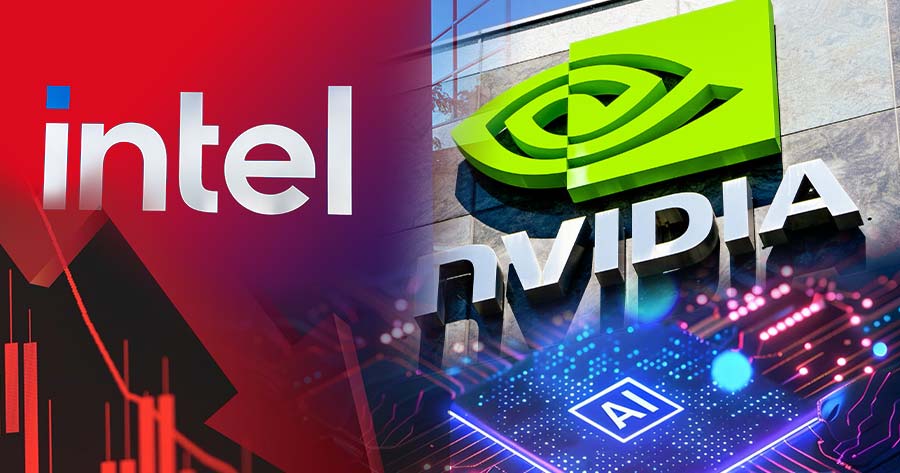After years of blunder, Intel Corporation (Nasdaq: INTC) under the CEO Pat Gelsinger bets its future on the USD 30-billion investment in the construction of two state-of-the-art fabrication plants in Arizona. The plants will be the first to employ the new 18A chip-making process, while Gelsinger hopes to put Intel up as a serviceable contestant to Taiwan Semiconductor Manufacturing Company (TSMC).
Intel has become a victim of its own dilemma – while focusing on personal computers (PC) and data centers during the early days of the twenty-first century, the company missed out on the smartphone rush, followed by another missed opportunity when the market was all about artificial intelligence chips.
Nvidia (Nasdaq: NVDA), the biggest competitor to Intel, turned its original chips designed for video game graphics processing units (GPU) into an AI training facility for numerous AI models. The current AI-generated content boom has propelled Nvidia to be one of the most valuable companies with over USD 3 trillion net worth. In comparison, Intel sits at USD 84 billion net worth.
Gelsinger has been promoting Intel’s “manufacturing excellence” in an attempt to inaugurate itself in the AI chip market, while many still fear the company is on track for an irreversible decline.
Once an indisputable champion in the CPU business, Intel has allowed itself to be dethroned by its major rival Advanced Micro Devices Incorporate (Nasdaq: AMD) due to many production delays and drawbacks at its own fabrication plants. Occupied with such issues, Intel overlooked how GPUs gradually came to dominate the AI market, while still betting on CPUs to be the main driver for AI.
Intel has announced its own “Ponte Vecchio,” a GPU designed for AI in an attempt to belatedly get into the market. However, the GPU was deemed too complicated and three costly different processes were needed to fabricate the GPU. Moreover, the performance was subpar in comparison to Nvidia’s flagship. Ponte Vecchio has been canceled since Gelsinger plans to introduce another design in 2025.
Another failed attempt was in 2016 when Intel decided to buy Nervana Systems, an AI startup in San Diego, for USD 350 million, who took too long to release chips that were still outperformed by Nvidia’s. Intel also bought an Israeli Habana Labs for USD 2 billion in 2019 – claiming Habana’s chips superior to Nvidia’s, though such claims have never been verified.
Gelsinger acknowledged that Nvidia chips are irreplaceable when it comes to large-scale AI training, publicly commenting at a technology conference that Nvidia is way ahead of the curve. Alternatively, Gelsinger hopes for Intel to compete in the AI inference market – running AI models without necessary training. Nonetheless, Intel’s board still has their concerns about such tactics, calling them too pacifistic to ensure a significant role for Intel in the rapidly-growing market.
It should also be noted that the 18A process is very expensive. Meanwhile, costs for the abovementioned construction in Arizona, as well as two more to be built in Ohio, have surpassed the first estimation. The Arizona plants scheduled to go online in 2025 were plagued by delays and incompetence as tested by Broadcom Incorporate (Nasdaq: AVGO), another semiconductor manufacturer.
Funding the 18A process has also become the company’s financial nightmare. Intel’s annual sales since Gelsinger’s takeover dropped by 30% or roughly USD 24 billion and Investors reacted to a myriad of mishaps by pushing Intel’s price down by almost 60% this year.
Regardless, Intel may be seeing silver linings in the future as Apollo Global Management (NYSE: APO) and Qualcomm (Nasdaq: QCOM) recently approached Intel with potential investment offers.





